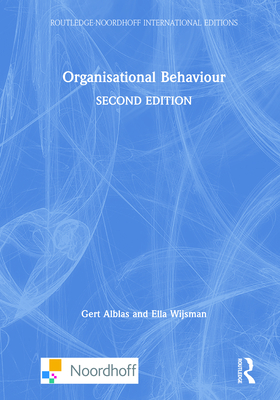图书简介
For many years, Organizational Behaviour has been the number one introduction into organizational psychology. Alblas and Wijsman offer an inspirational description of the behavior of people in organization and offer explanations for these behaviors.Moreover, the authors indicate how this knowledge can be put to use in managing an organization. This makes Organizational Behaviour a suitable work for a vast range of courses in higher economic, technical, and social education alike.The inclusion of newspaper and online articles in this addition clearly illustrates its applicability in practice.Its clear use of language, comprehensive summaries, case histories with evaluation assignments, and practice tests on the accompanying website make this book a very suitable tool for self-study.
Introduction 1 Individual and organisation 1.1 Behaviour and motivation 1.2 Abilities and competences 1.3 Personality 1.4 Attitudes 1.5 The relationship between individual and organisation 1.6 Commitment 1.7 Job satisfaction 1.8 Equitability 1.9 Changing relationships 2 Integration and motivation 2.1 Recruitment and selection 2.2 Integration 2.3 Methods of integration 2.4 Motivation 2.5 Effects of motivation 2.6 Intrinsic and extrinsic motivation: conclusions 2.7 Retaining people in an organisation 3 Groups in organisations 3.1 The group concept 3.2 The organisation as a collection of groups 3.3 Types of groups in organisations 3.4 Functions of groups 3.5 The group as a social environment 3.6 Phases in group development 3.7 Structural characteristics of groups 3.8 Relationships between groups 3.9 Improving relationships between groups 4 Collaboration and decision-making in groups 4.1 Effective collaboration in groups 4.2 Process losses in executive groups 4.3 Optimising group performance 4.4 Effective decision-making in groups 4.5 Advantages and disadvantages of a group approach 4.6 Criteria for effective decision-making in a group context 4.7 Process losses in decision-making 4.8 Improving decision-making in groups 4.9 Leadership in decision-making 4.10 Collaboration and consultation in self-managing and virtual teams 5 Communication in organisations 5.1 Communication 5.2 The communication process 5.3 Aspects of communication 5.4 Communication in organisations 5.5 Impediments to communication 5.6 Problems in formal communication 5.7 Improving communication 6 Power and leadership 6.1 Power and influence 6.2 Sources of power 6.3 Use of power 6.4 Effects of use of power 6.5 Use of power for political purposes 6.6 Abuse of power 6.7 Leadership in organisations 6.8 Leadership and effectiveness 6.9 Improving leadership 6.10 Influence of leadership 7 Organisational structure 7.1 Creating structure 7.2 Distribution of labour 7.3 Functional division 7.4 Coordination of activities 7.5 Grouping activities 7.6 Responsibilities and relationships 7.7 Additional forms of authority and mutual relationships 7.8 Designing communication channels 7.9 Organic and mechanistic structures 7.10 Developments in structural design 7.11 Design questions 8 Organisational culture 8.1 The concept of culture 8.2 Organisational culture 8.3 Types of organisational culture 8.4 Organisational culture and effectiveness 8.5 Establishing the culture of organisations 8.6 The development of organisational culture 8.7 Transmitting organisational culture 8.8 Organisational culture and nationality 8.9 Cultural bias 8.10 Changing the organisational culture 9 Decision-making in organisations 9.1 Characteristics of problems 9.2 Areas of decision-making in organisations 9.3 Problems in decision-making 9.4 Impediments to decision-making 9.5 Decision-making models 9.6 Strategic decision-making 9.7 Model for strategy formulation 9.8 Organizing strategic decision-making 10 Stress and conflict 10.1 Psychological load 10.2 Work-related causes of stress and burn-out 10.3 Person-related causes of stress and burn-out 10.4 Preventing or combating stress and burn-out 10.5 Physical load 10.6 Reducing the physical load 10.7 Conflicts at work 10.8 Conflict management 10.9 Conditions that influence conflict management 10.10 Escalation of conflicts 10.11 Organisational intervention in conflict resolution 11 Organisational change 11.1 Necessity for change 11.2 Causes of change 11.3 Deciding to change 11.4 Planned organisational change 11.5 Types of change 11.6 Two approaches to planned change 11.7 Impediments to the change process 11.8 The role of management in change processes 11.9 Creating a structure for handling change 11.10 Reducing resistance and increasing support Bibliography About the authors Index Illustration acknowledgement
Trade Policy 买家须知
- 关于产品:
- ● 正版保障:本网站隶属于中国国际图书贸易集团公司,确保所有图书都是100%正版。
- ● 环保纸张:进口图书大多使用的都是环保轻型张,颜色偏黄,重量比较轻。
- ● 毛边版:即书翻页的地方,故意做成了参差不齐的样子,一般为精装版,更具收藏价值。
关于退换货:- 由于预订产品的特殊性,采购订单正式发订后,买方不得无故取消全部或部分产品的订购。
- 由于进口图书的特殊性,发生以下情况的,请直接拒收货物,由快递返回:
- ● 外包装破损/发错货/少发货/图书外观破损/图书配件不全(例如:光盘等)
并请在工作日通过电话400-008-1110联系我们。
- 签收后,如发生以下情况,请在签收后的5个工作日内联系客服办理退换货:
- ● 缺页/错页/错印/脱线
关于发货时间:- 一般情况下:
- ●【现货】 下单后48小时内由北京(库房)发出快递。
- ●【预订】【预售】下单后国外发货,到货时间预计5-8周左右,店铺默认中通快递,如需顺丰快递邮费到付。
- ● 需要开具发票的客户,发货时间可能在上述基础上再延后1-2个工作日(紧急发票需求,请联系010-68433105/3213);
- ● 如遇其他特殊原因,对发货时间有影响的,我们会第一时间在网站公告,敬请留意。
关于到货时间:- 由于进口图书入境入库后,都是委托第三方快递发货,所以我们只能保证在规定时间内发出,但无法为您保证确切的到货时间。
- ● 主要城市一般2-4天
- ● 偏远地区一般4-7天
关于接听咨询电话的时间:- 010-68433105/3213正常接听咨询电话的时间为:周一至周五上午8:30~下午5:00,周六、日及法定节假日休息,将无法接听来电,敬请谅解。
- 其它时间您也可以通过邮件联系我们:customer@readgo.cn,工作日会优先处理。
关于快递:- ● 已付款订单:主要由中通、宅急送负责派送,订单进度查询请拨打010-68433105/3213。
本书暂无推荐
本书暂无推荐















